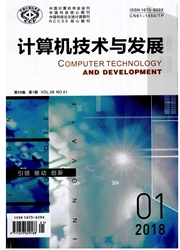

 中文摘要:
中文摘要:
随着非易失存储器的出现和广泛使用,存储体系结构正在发生根本改变.传统数据库系统与文件系统事务处理技术大多基于磁盘设备,设计之初并未考虑非易失存储器特性.为了充分利用非易失存储器特性,缩小计算机系统的I/O性能与CPU处理性能之间的差距,基于非易失存储器的事务存储系统与技术成为了研究热点.首先讨论了软件层事务处理技术的现状,分别介绍了传统数据库系统与文件系统事务处理常用技术;然后依据闪存和相变内存进行划分,对现有基于非易失存储器的事务存储系统与技术进行了讨论;最后给出了基于非易失存储器的事务存储系统研究展望.在基于闪存的事务存储相关研究中,首先分析了使用传统设备接口闪存设备加速事务处理的系统设计,然后重点分析了基于专用事务接口的事务闪存存储系统研究,并对基于闪存的事务存储系统不同研究进行了比较.在基于相变内存的事务存储相关研究中,分别分析并比较了相变内存在主存环境和外存环境提供事务处理的技术,重点讨论了日志与缓存融合技术、细粒度日志技术等关键问题.
 英文摘要:
英文摘要:
With the emergence and further widespread use of non-volatile memory, the storage architecture is undergoing fundamental change. Transaction processing technologies in traditional database systems and file systems are mostly designed for rotating disks while they cannot take full advantage of new features of non-volatile memory. To take full advantage of the non-volatile memory characteristics and narrow the gap between system I/O performance and CPU processing performance, transactional storage systems and technologies designed based on non-volatile memory have gained focus and great popularity. In this paper, current status of the software layer transaction processing technologies, which are used in traditional database systems and file systems, are addressed in brief firstly. Then based on the division of non-volatile memory which includes flash and phase-change memory, the existing transactional storage systems based on non-volatile memory are discussed. Finally, the research works are summarized and the possible research directions are pointed out. Among the discussion, for the research of transactional flash-based storage systems, analysis of the optimization of transaction processing technologies using traditional host interface flash storage devices is given first, followed by analysis and comparison of the characteristics of the transaction flash storage systems using dedicated transactional interfaces. For the research of transactional PCM-based transactional storage systems, using PCM in both main memory and external storage environment for transaction processing is analyzed and compared, and the key technologies including the combination of log and cache and fine-grained logging are discussed.
 同期刊论文项目
同期刊论文项目
 同项目期刊论文
同项目期刊论文
 期刊信息
期刊信息
